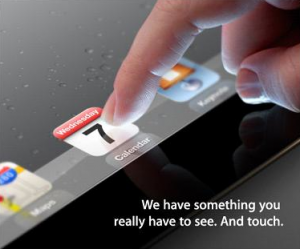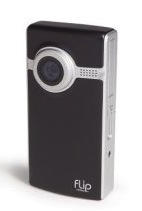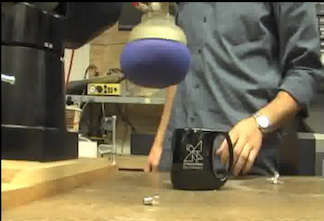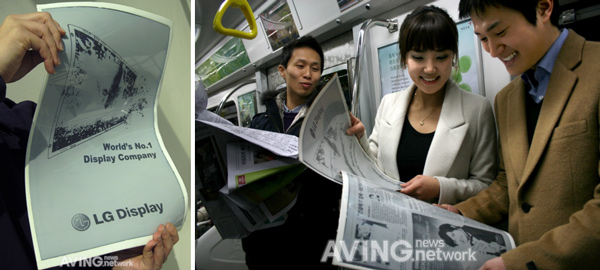Category: gadget
Demo of Senseg Haptic Feedback
iPad HD with Haptic Feedback

So there’s a rumor going around this morning that the iPad HD will have haptic feedback. That means you’ll be able to feel objects on the screen. Sandpaper would feel like sandpaper, for example. Very, very cool if true.
And all this time we had the hint (from the invitation picture, above) all this time.
We’ll see in a few hours!
Update: Nope! No Haptic feedback.
IPad HD?
Well, the big announcement is tomorrow, and everyone expects it’ll be the the iPad 3. From the rumors, it might even be called the iPad HD.
So a couple of questions…
How are developers going to deal with the confusion of all the apps for the iPad that have the tag HD?
How are iPad graphics going to look on a much higher resolution screen?
How much memory is it going to have and how much more graphics processing power is it going to require?
Inkling by Wacom
This looks very, very cool.
The biggest problem with this kind of tech before was that you needed special paper (with small grids, or dots) to have it work with your computer. This doesn’t. It lets you import your drawing as vectors, with layers, using regular paper.
A Robot That Flies Like a Bird
Flip Camera: RIP
Cisco has axed the Flip camera, and is laying off 550 employees.
Metropolis 2
Universal Robot Gripper – Made with Coffee and a Balloon
Sometimes the simplest things work the best. Researchers at Cornell, University of Chicago and iRobot (the Roomba folks) have created a robot gripper that is made with ground coffee and a latex balloon.
Basically, they vacuum air out of the coffee filled balloon and the structure inside becomes rigid. Let air in, and the structure relaxes. Think of how hard a brick of coffee is, and what it’s like after you cut through the vacuum packing.
The balloon presses into the object that they want to grip, vacuum out the air, and the balloon and coffee grip the object. A very inexpensive solution to a problem many people have been working on for a long time.
Check out the details and video at Physorg.com.
Flexible e-paper in production
LG is putting 9.7-inch color and 19-inch flexible e-paper displays into production.
Could this be what the future of digital books really is? It seems a little odd to me that it would be in a multi-page format, rather than a single page that changes. I thought at first it might be interesting to have a blank book, with each page being a digital display, but…. that would be kinda stupid. A much more likely scenario would be to have posters made from these displays. For advertising, it would mean less work sending people out to change bill boards. For home, you could have large format displays for just about anything you’d want. Plus, since they would be able to change, you can make them time aware, so the poster would change depending on how you usually use it during the day. News in the morning, television schedule or cooking instructions in the evening.
I know you can do all of that now, but the real bonus here is that it’s so thin, you can put the display in places where bulky monitors just won’t fit.
Lot of possibilities.
Sooner or later, someone’s going to figure out how to put these things on cereal boxes, and you’ll never be able to walk down that aisle in the grocery store again without having your brain go into overload.
via Engadget.


